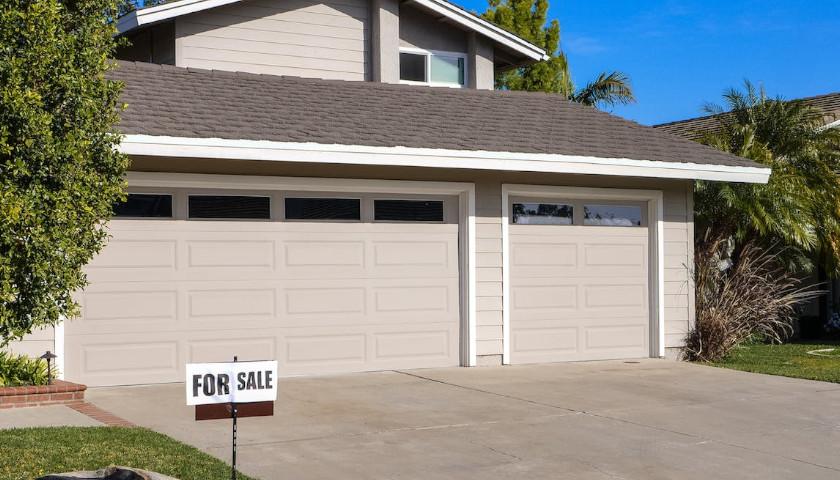by Steve Cortes
Far too many Americans cannot afford the most basic necessity of life: a decent place to live.
Rental and purchase costs for quality apartments and houses simply price out many working-class citizens.
One such worker is Patrice Stinney who works three jobs including serving coffee at a shop in the Phoenix Sky Harbor Airport. Despite regular 14-hour days, Ms. Stinney explained to USA Today that she must live with her brother because she cannot afford her own place. The 40-year-old resident of Goodyear, Arizona explained that “everything costs so much. Food is high. Gas is high. It’s really hard for me…I can only imagine what people with a family and kids must be going through.”
Stinney may not be a trained economist, but she hits the bullseye with her on-the-ground analysis of the predicament facing households of modest means across America, particularly those with children or other dependents. According to a Goldman Sachs index which extends back three decades, America just hit the worst levels ever for housing affordability. Given this lack of affordability, first time homebuyers especially struggle. Per the National Association of Realtors, the ratio of first-time buyers just melted down to the lowest levels since the early 1980s – not coincidentally, the last time America suffered from serious, systemic inflation.
So, who can buy shelter right now? Generally, the market becomes increasingly dominated by the wealthy, often as investors rather than residents, and by institutional capital which makes a sizable move into single family homes and smaller apartment complexes for the first time ever.
According to Realtor.com, middle income earners can only afford 23% of the homes and condos on the market for sale right now. For context, that number was above 50% just five years ago. Increasingly, institutional capital exploits this disequilibrium and snatches up the housing stock that regular citizens cannot afford to buy. Massive private equity-backed firms become large-scale landlords, even of single-family homes and MetLife projects that, by 2030, institutions will own a stunning 40% of America’s housing rentals.
Of course the lack of affordability for shelter purchases leads directly to similar problems in the rental market, as even apartments now skew heavily to the upper-end, leaving modest earning Americans behind. For example, the Harvard University Center for Housing studies just reported that, adjusted for inflation, from 2015 to 2022, the share of new apartments that costs over $2,000/month nearly doubled, from 19% of the market to a whopping 36% of the market. On the lower-priced end, the opposite trend unfolded. Back in 2015, 22% of new units rented for $1,050 or less per month. But by 2022, adjusted for inflation, only 5% of new units could be had for that affordable rate.
Consider the human consequences, as unaffordable housing exacerbates troubling social trends. First, middle- and lower-income families must settle for subpar living conditions, essentially surrendering centuries of progress in America regarding higher standards of life. In addition, many of these low-quality dwellings sit in dangerous neighborhoods with poor public schools, deepening the risks for workers and their children.
Regarding children, one key reason that the birthrate in America is plunging flows from the decline of marriages and household formation. Pew Research just released foreboding numbers showing that 25% of 40-year-old Americans have never been married, by far an all-time record high. For context, that number was only 6% in 1980. Surely, cultural and religious trends partly drive this move away from marriage and family, but unaffordable housing clearly also plays a foundational and vexing role, as well.
So, what can be done? For starters, punting Biden and the profligate Democrats from power in Washington is a must. To bring down overall inflation and interest rates, America simply must get real about exorbitant federal borrowing and spending. In this regard, many establishment Republicans deserve enormous blame as well, and should be primaried into 2024, especially those who supported Biden’s albatross Omnibus package passed in the waning hours of the last Democrat-controlled Congress in 2022.
In addition, at the state and local level, governments needs to better accommodate new construction of housing stock. Stifling regulations often make building an onerous, time-consuming, and expensive process, especially in liberal jurisdictions. Such unnecessary hurdles practically force builders to focus on only high-end projects, given the economics of permitting and zoning.
This crisis issue of housing affordability generates little attention in America today. In part, the disinterest results from corrupt and entitled ruling class potentates who can afford purchases and, in fact, benefit from fast-rising prices for their luxury residences. But hard-working Americans like Patrice Stinney in Arizona suffer, and will become increasingly squeezed if policy reforms are not pursued, and soon. Let’s raise standards of living — and restore Americans’ spirits – through a return to affordable housing.
– – –
Steve Cortes is the president of the League of American Workers www.AmWorkers.com






Yes, there is a housing crisis–for BOTH middle and lower-income people. Greedy real estate speculation, the shortage of multi-unit and single-person units along with the regular traditional family single dwelling unit, zoning laws that prohibit business and neighborhoods from living side by side, and redlining practices that determine a neighborhood’s financial worth by its racial or class demographics are the five chief culprits that enable only the very rich to have decent housing. That’s the solution.